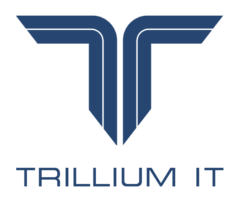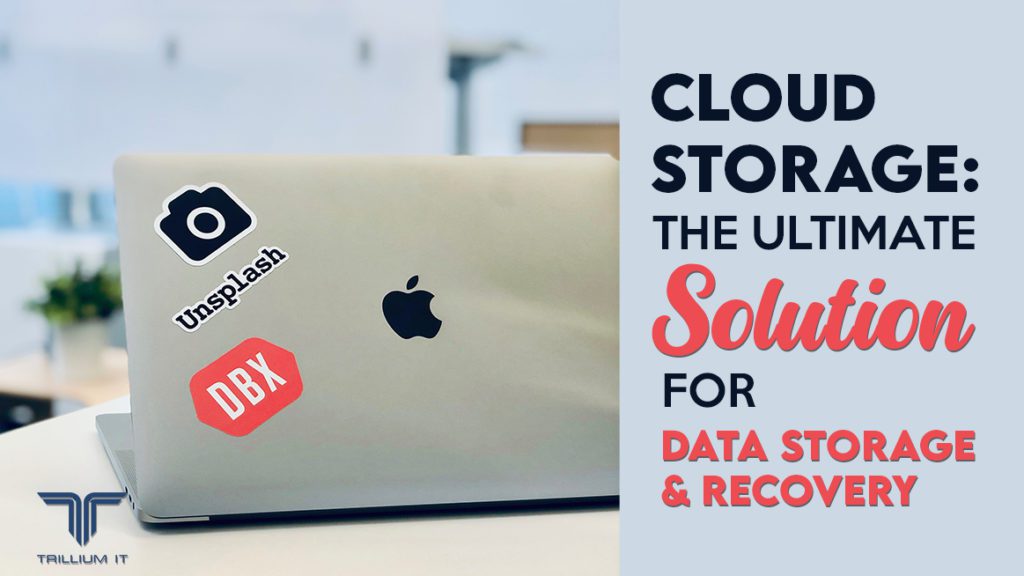Cloud backup, also known as online backup or remote backup, is a strategy for storing a copy of a physical or virtual file or database in an off-site location in the event of equipment failure or disaster. A third-party service provider typically hosts the backup server and data storage systems and bills the backup customer based on the amount of storage space or capacity used, the amount of data transmission bandwidth used, the number of users, or the frequency of data access.
Use cloud-based data backup to supplement a company’s data protection strategy without increasing the workload on IT staff. The labor savings may be significant enough to offset some costs associated with cloud backup, such as data transmission fees.
Knowing Cloud

“Cloud computing” refers to hosted services delivered over the Internet. Unlike traditional web hosting, cloud services are provided on-demand, elastically, and entirely under the service provider’s control. Customers are free to use as much or as little as they require. A cloud may be public or private. A private cloud, as opposed to a public cloud such as Amazon Web Services (AWS), only provides hosted services to a limited number of users.
A backup application copies data in a company’s data center and stores it on different media or in a different storage system to access it quickly during disaster recovery. Even though there are numerous options and methods for off-site backup, many businesses use the cloud as their off-site facility. If a company hosts its own cloud service, it owns the off-site server; however, if it uses a service provider to manage its cloud backup environment, the chargeback procedure is the same.
Integrate numerous cloud backup methods and services into an organization’s existing data protection procedure. The following are the various types of cloud backup:
Directly Backing Up to a Public Cloud
It directly archives data to a public cloud. Use the public cloud to duplicate resources and store organizational workloads. This method uses this method to upload data directly to cloud service providers such as AWS and Microsoft Azure. The company creates a copy of the data to upload to the cloud storage service using its backup software. The cloud storage service then provides the data’s destination and storage but does not provide a backup program. The backup program must communicate with the cloud storage service in this case. Furthermore, IT professionals may need to investigate additional data security practices for public cloud options.
Supporting a Service Provider
In this scenario, an organization writes data to a cloud service provider that offers backup services in a managed data center. The backup software the company uses to send its data to the service may be provided as part of the service, or the service may support specific commercially-available backup applications.
A Cloud-To-Cloud (c2c) Backup Option
Assisting a service provider A business transfers its data to a cloud provider that provides managed data center backup services. The backup software that the company uses to send its data to it may be included in the service, or it may support backup programs that are sold separately.
Using Cloud Backup Services Online
Decision-making for cloud-to-cloud (C2C) backup. These are the most recent cloud backup services that are available. They are experts at restoring data uploaded to the cloud via a SaaS application or a cloud backup service. As the name implies, a cloud-to-cloud backup service copies data from one cloud to another. Typically, the software responsible for managing this procedure is hosted by the cloud-to-cloud backup service.
Utilizing cloud-based online backup tools Furthermore, there are hardware options that make data backup to a cloud backup service easier. These are backup servers that include backup software as well as storage space. The appliances offer a seamless (or nearly seamless) connection to one or more cloud backup services or cloud providers. They are as close to plug-and-play as backup gets.
Cloud-interfaced backup appliances are available from Quantum, Unitrends, Arcserve, Rubrik, Cohesity, Dell EMC, StorageCraft, and Asigra, among others. The most recent backup is typically stored locally in addition to being sent to the cloud backup service provider. It allows any necessary recoveries to be performed using the local backup copy, saving time and money on transmission fees.
How Are Data Recovered?
A client software application that runs on a schedule based on the purchased level of service and the customer’s needs is the typical foundation of cloud backup services. Suppose the customer has contracted for daily backups. In that case, the application collects, compresses, encrypts, and transfers data every 24 hours to the cloud service provider’s servers. After the initial full backup, the service provider may only provide incremental backups to reduce bandwidth usage and file transfer times.
Cloud backup services, such as SQL Server and Exchange applications, frequently include the hardware and software required to safeguard an organization’s data. Regardless of whether the customer uses its backup application or the software provided by the cloud backup service, the same application is used to restore backed-up data. Restorations could be carried out volume by volume, file by file, or as a full backup restore.
If the amount of data to be restored is large, the cloud backup service may ship the data on an entire storage array. The client can retrieve data by connecting the storage array to its servers. It is essentially an example of reverse seeding. Restoring a large amount of data over a network can be time-consuming.
One of the most significant benefits of cloud backups is restoring them from virtually any location on any computer. Suppose a company’s data center goes down. In that case, it may be able to recover its data by transferring it as soon as possible to a disaster recovery site.
What Advantages Do Cloud Backups Offer?
Having reliable backups can reduce downtime and financial losses incurred during periods of inaccessibility and provide peace of mind. Getting back online quickly results in fewer unhappy or lost customers.
When retrieving data from cloud backups quickly, business continuity improves, and hardware rebuilding and rebooting take less time (looking for traditional backup methods like disks, reinstalling everything from scratch, and testing).
Usability
Train employees to retrieve lost data from cloud servers. This process is incredibly streamlined and user-friendly, thanks to Seagate.
Security
Only authorized users have access to data stored remotely on a cloud-based system in a secure location encrypted with multiple layers. It reduces the likelihood of someone breaking into your location and stealing data.
Scalability
As your business or a specific project evolves, you can quickly increase or decrease your required cloud storage. Spending money on hardware and having either too much or too little storage is preferable.
Cost Efficient
Cloud backups are available at various price points depending on your needs. For some enterprise-level requirements, purchasing additional storage is simple. There is a straightforward pricing formula for various capacities.
Combining cloud storage with an additional service such as Amazon S3 can result in additional cost savings due to Amazon S3’s intelligent tier pricing model.
Emergency Recovery
Every organization must have a disaster recovery plan that includes backup storage. This document serves as a guide for what to do in the event of a disaster, including who is responsible for what tasks to wholly and quickly restore access to stored data.
The cloud enables everyone to access and provide critical information and services following a disaster, even if the physical location is inaccessible. Clouds should be accessible at all times, allowing maintenance and repair work to begin before regular business hours.
Which Is Better: Public or Private Cloud Backup?
If you’re new to cloud storage, you’ve probably heard of private and public clouds. A public cloud is an IT service provided by a single provider to multiple businesses. In contrast, a private cloud is reserved for a single business. Take, for example, Amazon S3. Data can still be partitioned and encrypted to protect it from unauthorized access.
Each option has advantages and disadvantages. It highly depends on the nature of your business, budget, and storage requirements.
Pros of Public Cloud Backup
The following are some of the benefits of public cloud computing:
- You only pay for what you use, with no need for additional hardware or software.
- There is no maintenance; the public cloud service provider handles it on your behalf.
- As your company expands, so should its cloud computing requirements.
- Data is still encrypted in a public cloud for high reliability.
Public cloud options offer a cost-effective method of exchanging data. They also provide data security and straightforward scalability. The costs are transparent and predictable.
Cons of Public Cloud Backup
Because of the large number of potential users, there may be times when resource demands cause data transfer rates to slow. Despite the constant emphasis on security, some organizations may mistake public clouds for less secure than private clouds.
Pros of Private Cloud Backup
The following are some of the benefits of private cloud computing:
- Tailor your cloud environment to specific business needs.
- Resources are not shared with third parties when you use a private cloud, giving you more control. Furthermore, it improves privacy.
- A customized, private cloud for your business improves scalability.
This option establishes a private cloud for a specific company. It is less expensive than the public cloud but provides superior overall performance and other network security companies. Furthermore, a cloud used solely by your company can provide flexibility benefits.
Cons of Private Cloud Backup
Suppose you’re starting to migrate your company’s data to the cloud and looking for the best backup option without knowing typical usage levels. In that case, you may want to stick with a public cloud unless you have the resources and need to support a private cloud.
This strategy may also be ineffective if your workload varies greatly. If your storage requirements change frequently but infrequently, you might start with a scalable public cloud.
Pricing for Cloud Backup Services
Many people are concerned about unexpected or hidden costs when using a cloud service. Seagate works hard to keep pricing predictable and transparent so that customers understand that costs are scalable based on their long-term and short-term storage needs.
Live Cloud storage pricing starts at $7 per terabyte (TB) per month for 500 TB of storage. Higher capacity services provide access to a dedicated customer success manager who will work with your company to determine the best pricing structure and system.
Conclusion
Cloud storage is the best option for backup and recovery of data. Because of the ever-increasing number of devices and files, keeping all of your data in one place has never been more critical. Dropbox and Google Drive, for example, provide unlimited storage and make it simple to access your files from any device. They also have backup and recovery capabilities, allowing you to restore your data during a disaster permanently.
Furthermore, if you want a secure device, you’ll need services that cater to your security needs. Trillium IT storage ensures that customer equipment operates at peak efficiency. Data storage is critical for the long-term preservation of business files and systems. By combining excellent current condition with robust shell storage, a company can reduce disparities.
In the event of data loss or intrusion, clients can rely on Trillium IT’s backup strategy. Storage solutions of the future will be cost-effective and efficient problem solvers.



